Abstract
This review of aquatic ecotoxicology is presented in three parts. First, we discuss the fundamental concepts and stress the importance of its ecological basis and the complexity and diversity of the field of investigation, which result from actions and interactions between the physicochemical characteristics of the biotopes, the structural and functional properties of the living organisms, and the contamination modalities. Ecotoxicological mechanisms, regardless of the level of biological complexity, primarily depend on the bioavailability of the toxic products. Numerous processes control the chemical fate of contaminants in the water column and/or sediment compartments; accessibility to the biological barriers that separate the organisms from their surrounding medium depends directly on bioavailability. Second, we review the principal methodologies of the field, from in situ studies at the ecosystem/ecocomplex level to bioassays or single species tests. Third, we focus on mercury, selected as a reference contaminant, in order to illustrate the main ecotoxicological concepts, the complementarity between field and laboratory studies, and the indispensable multidisciplinarity of the approaches.
Full text
PDF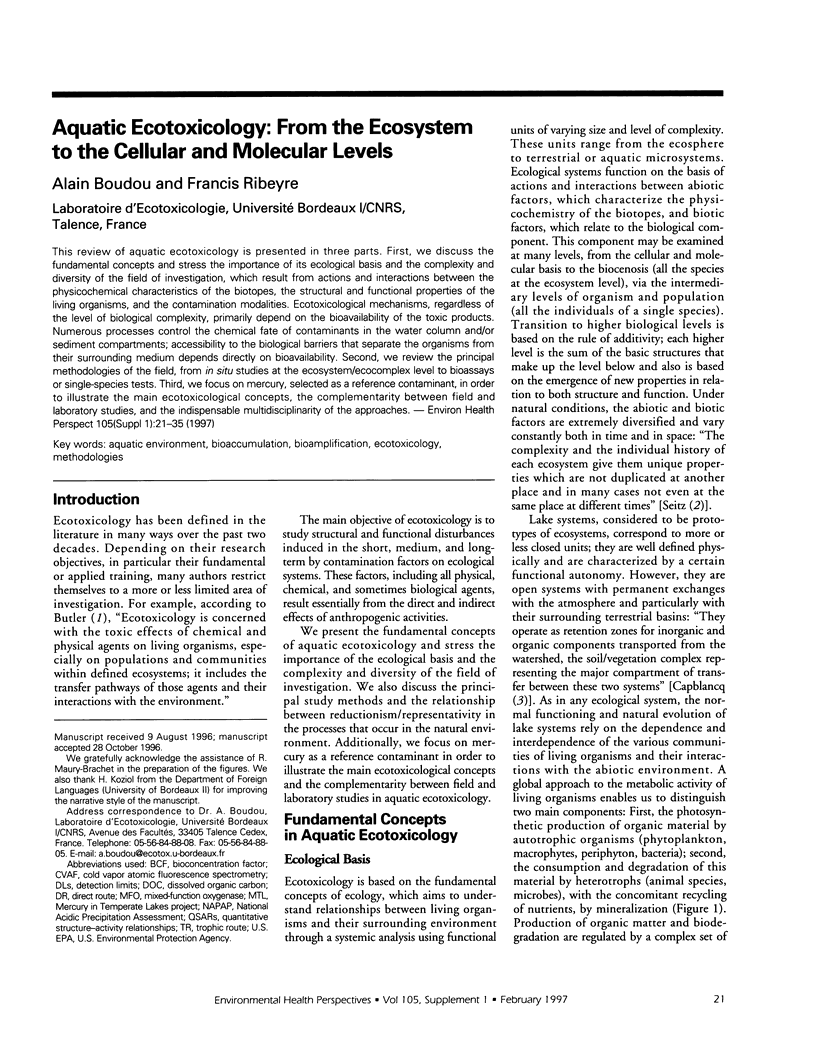
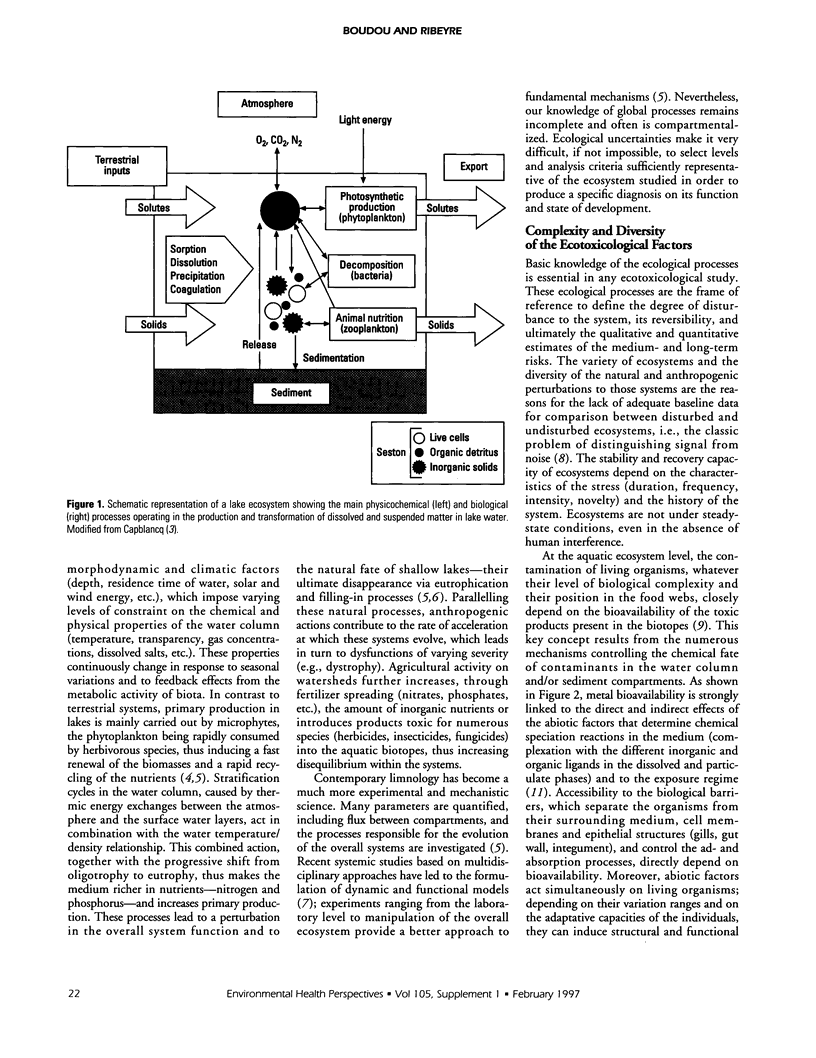
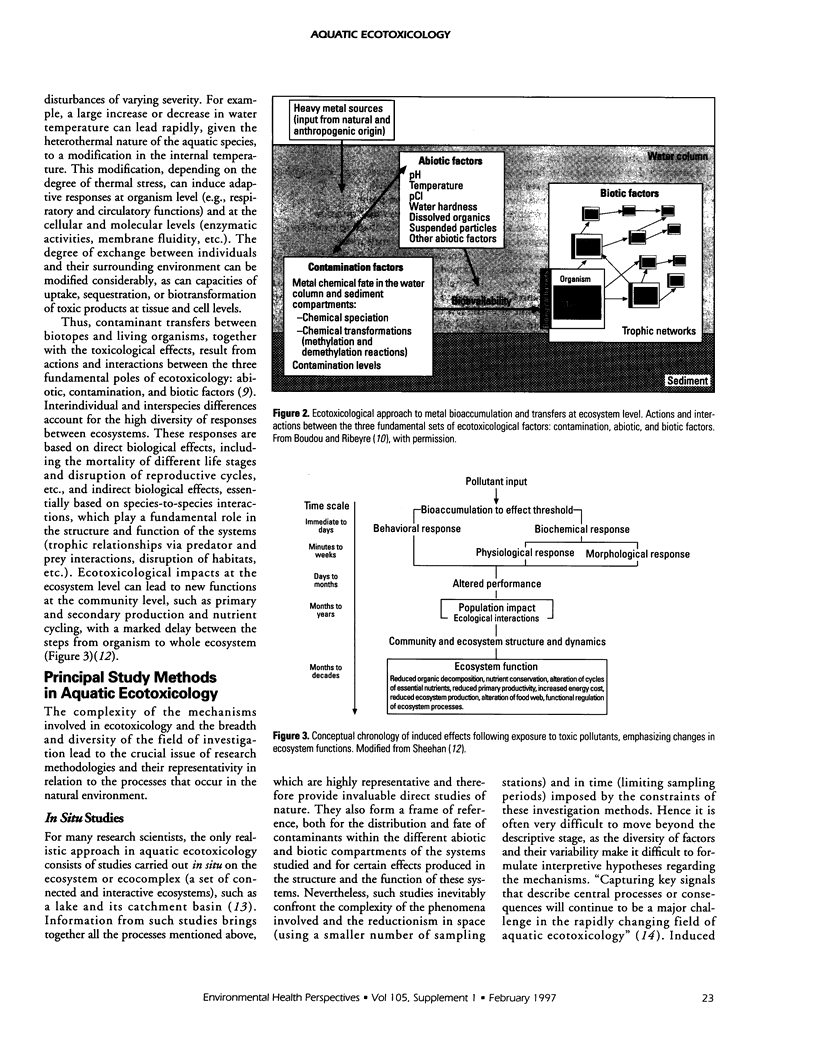
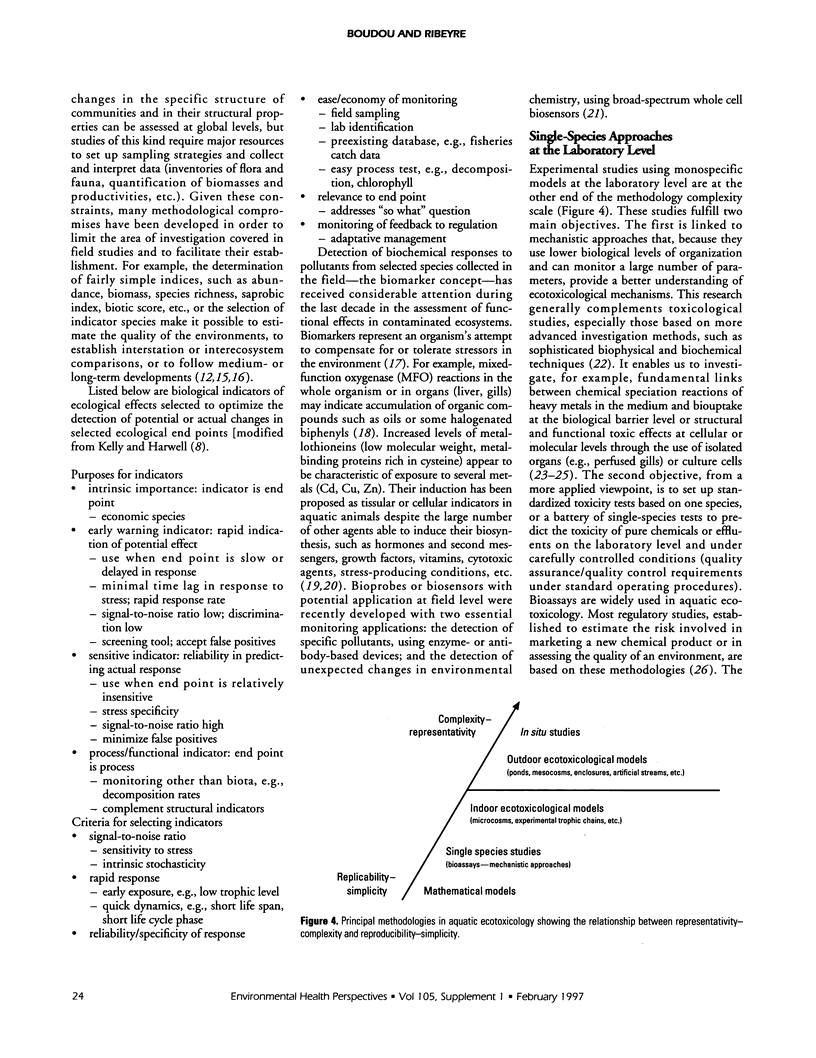
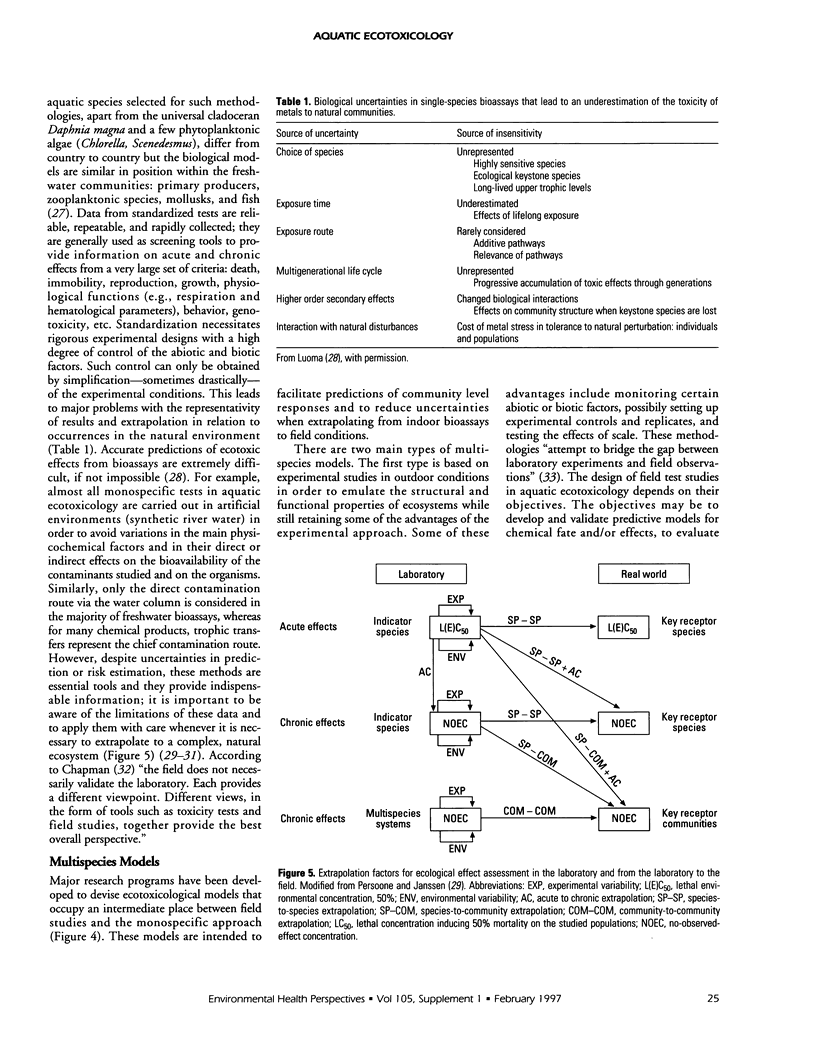
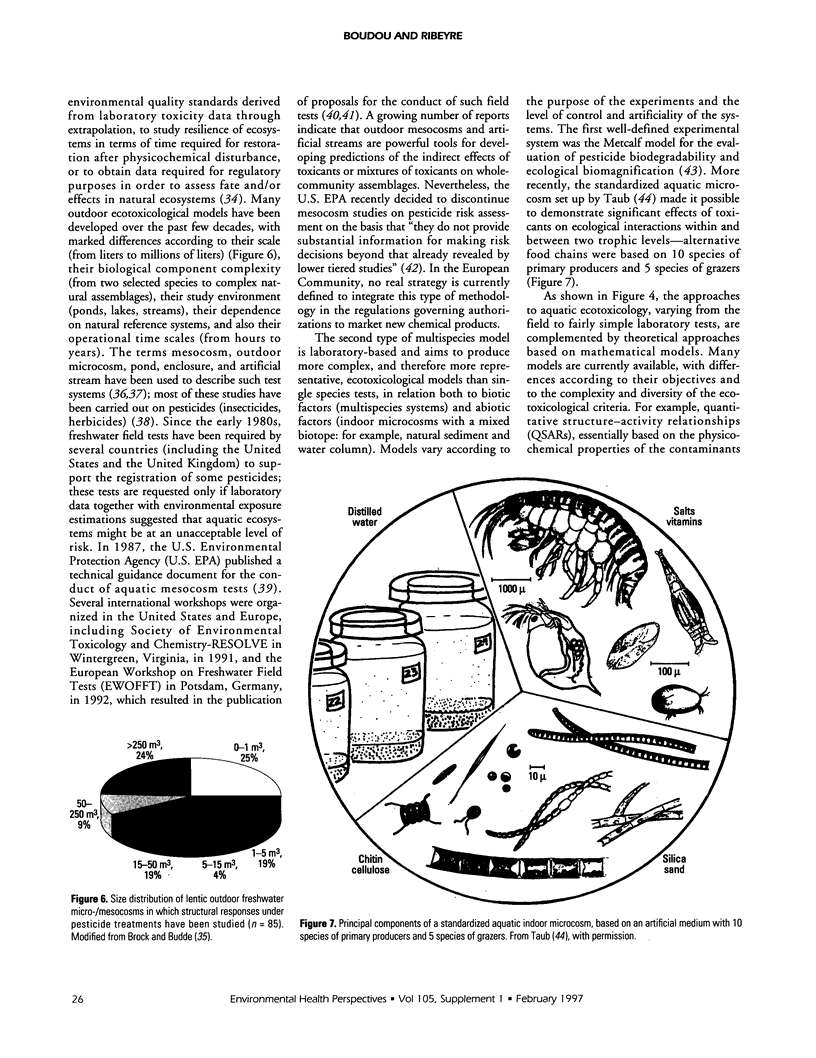
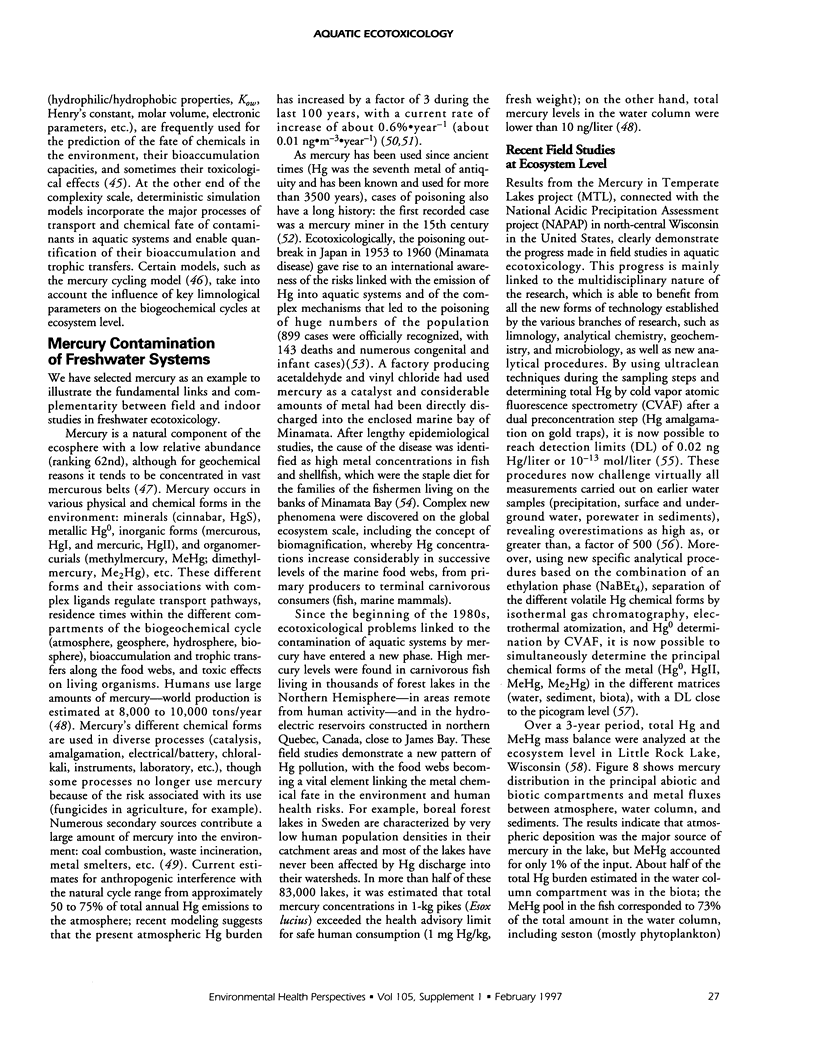
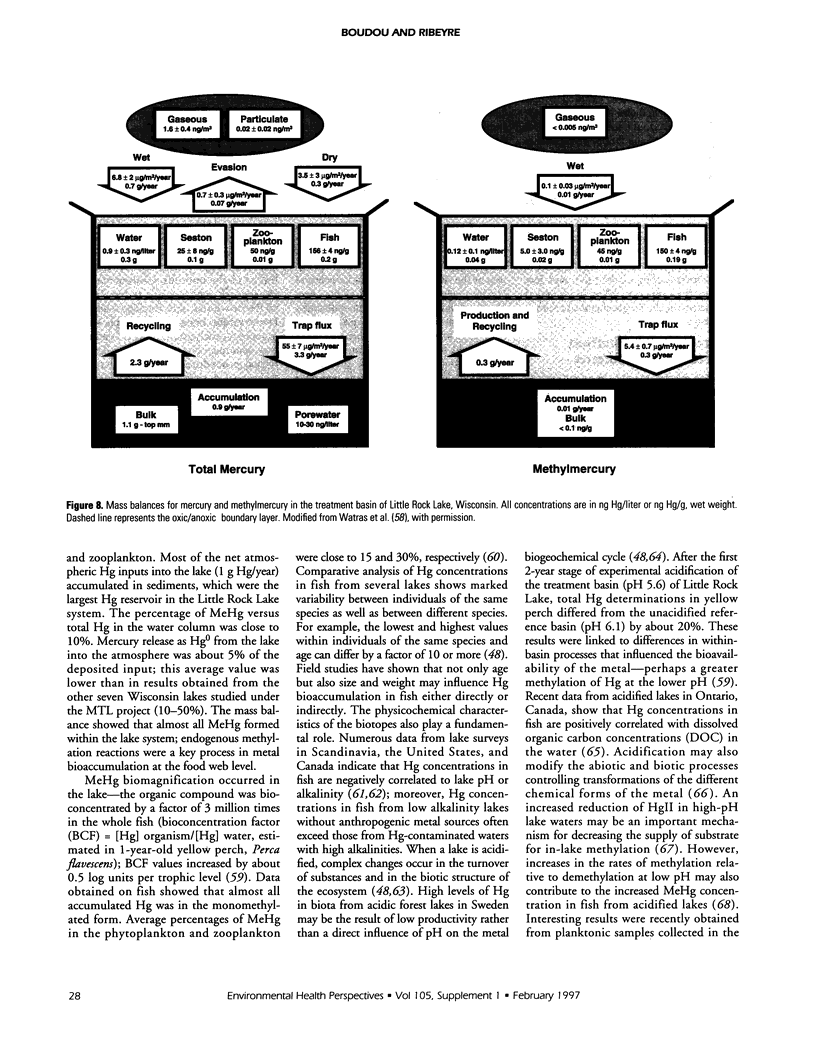
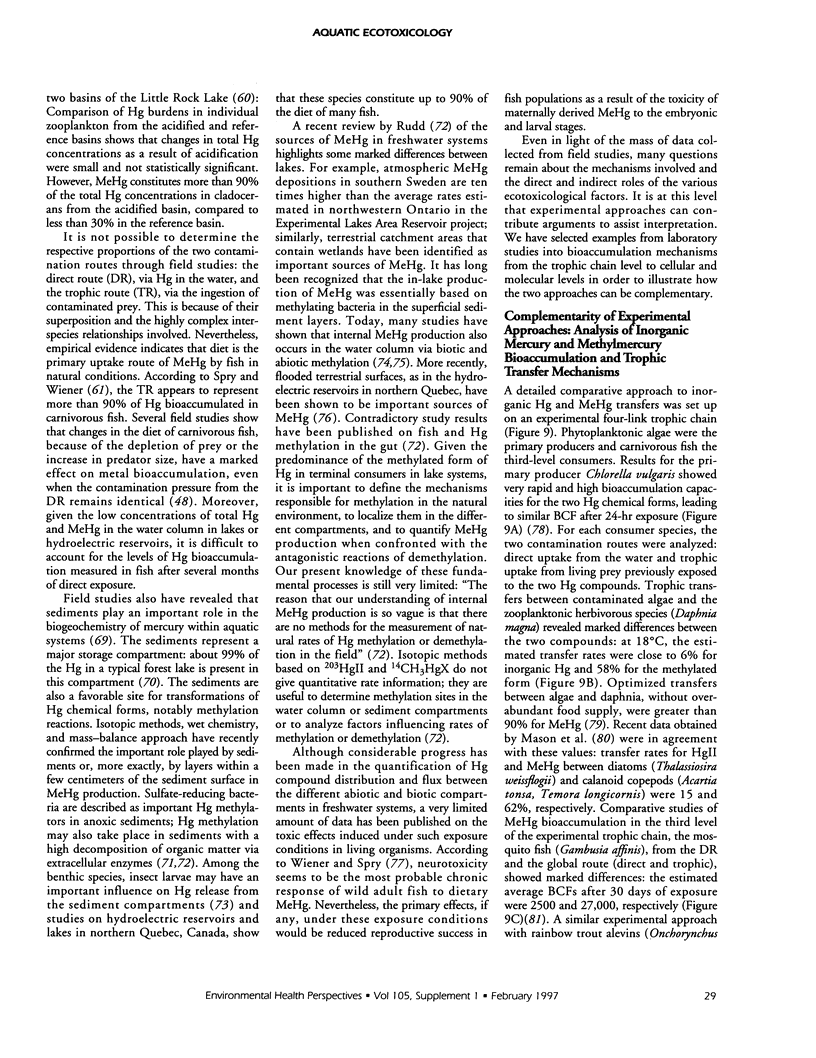
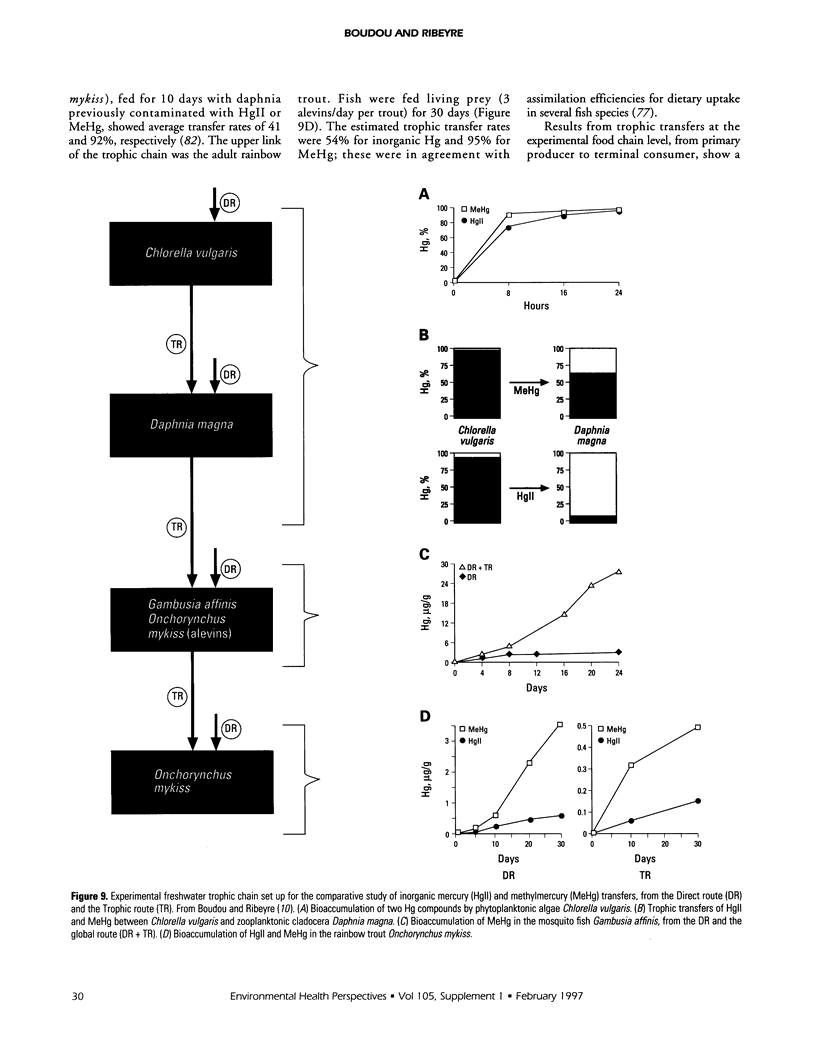
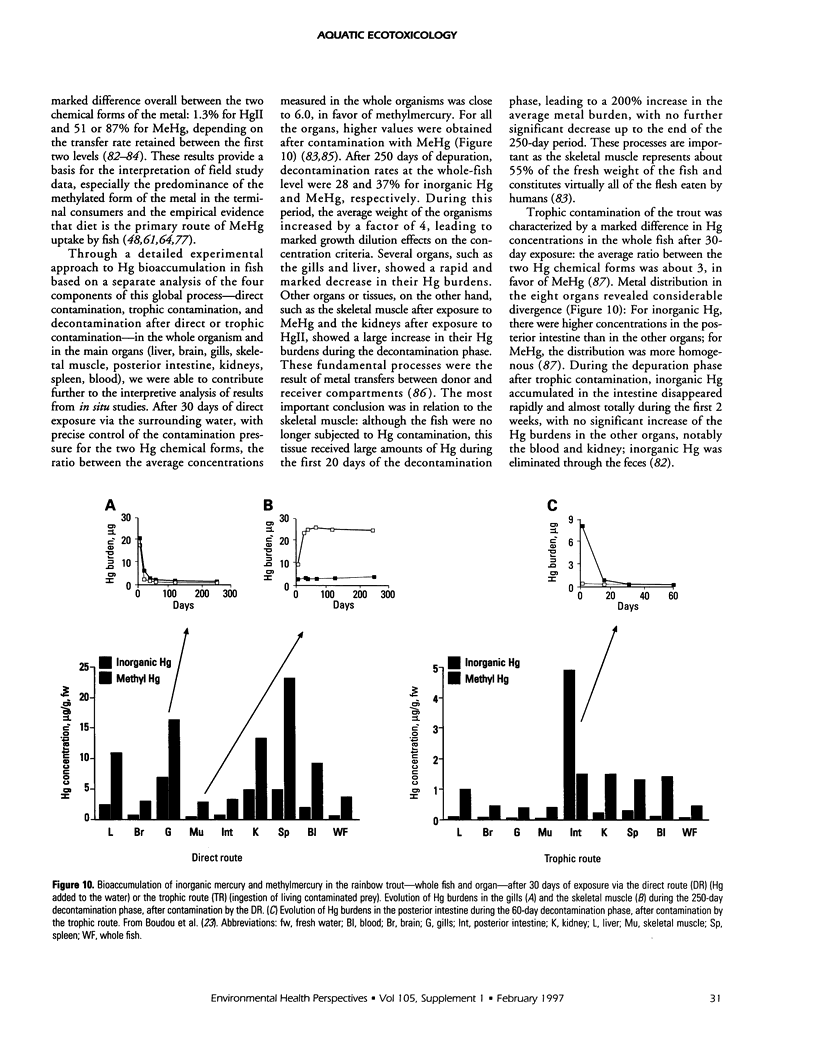
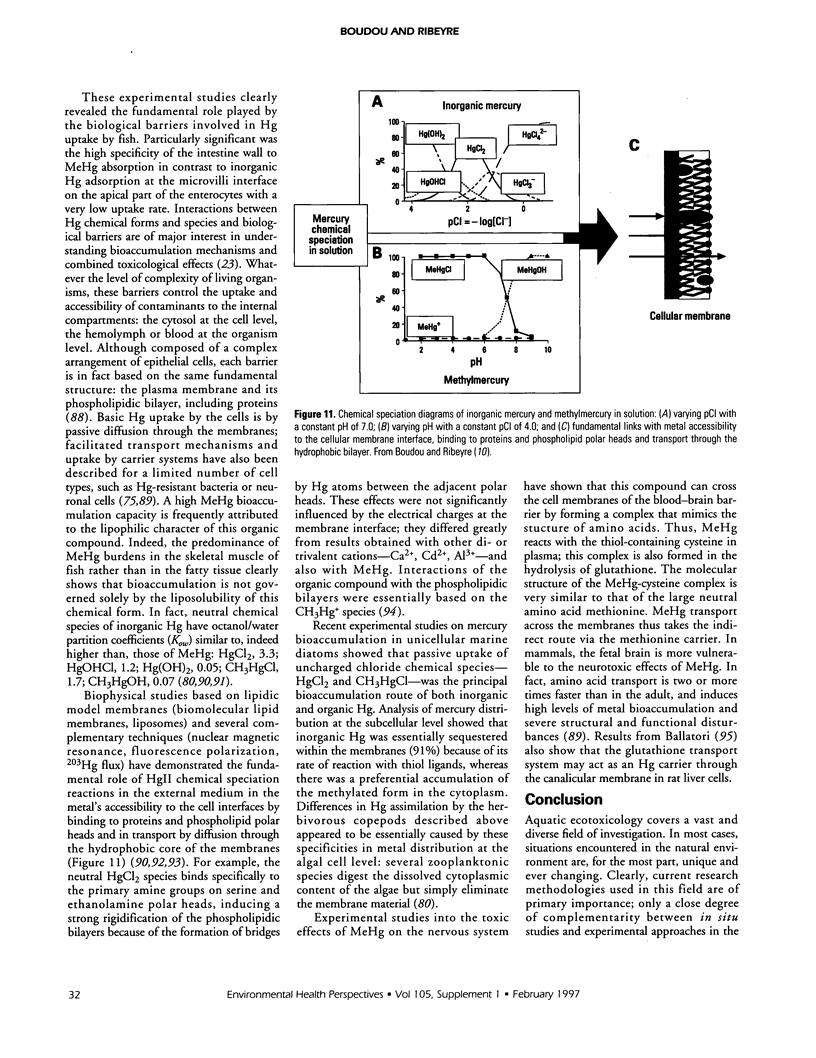
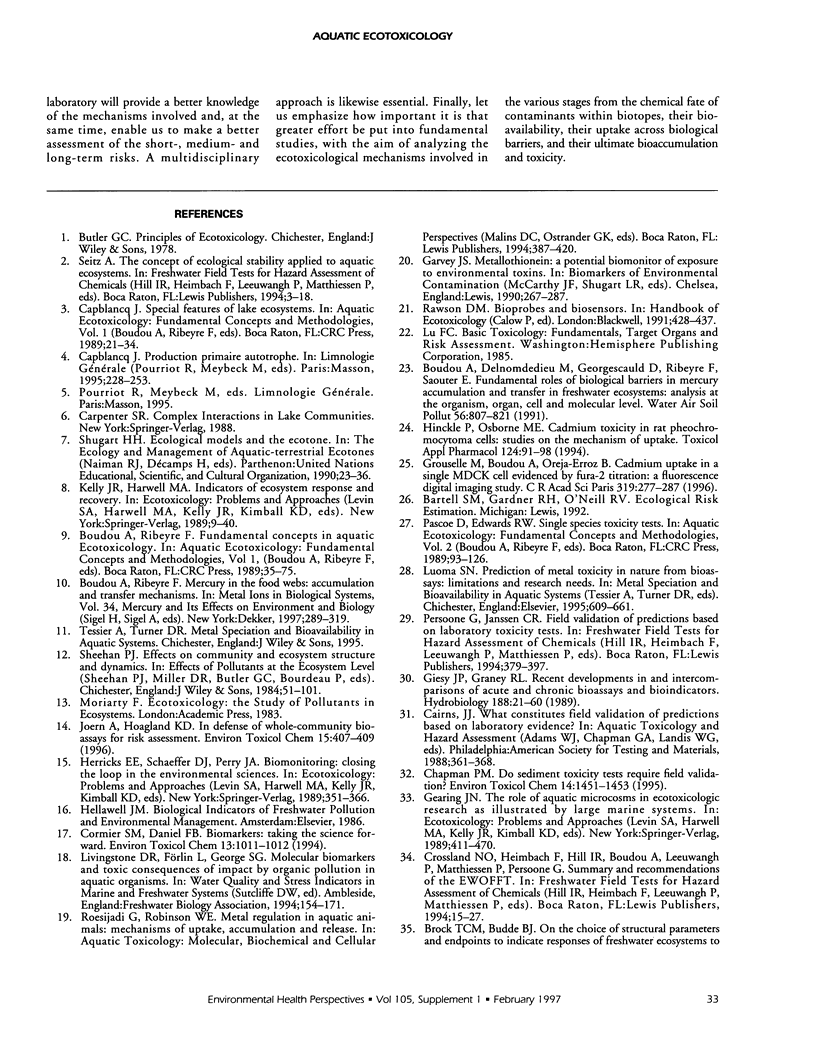
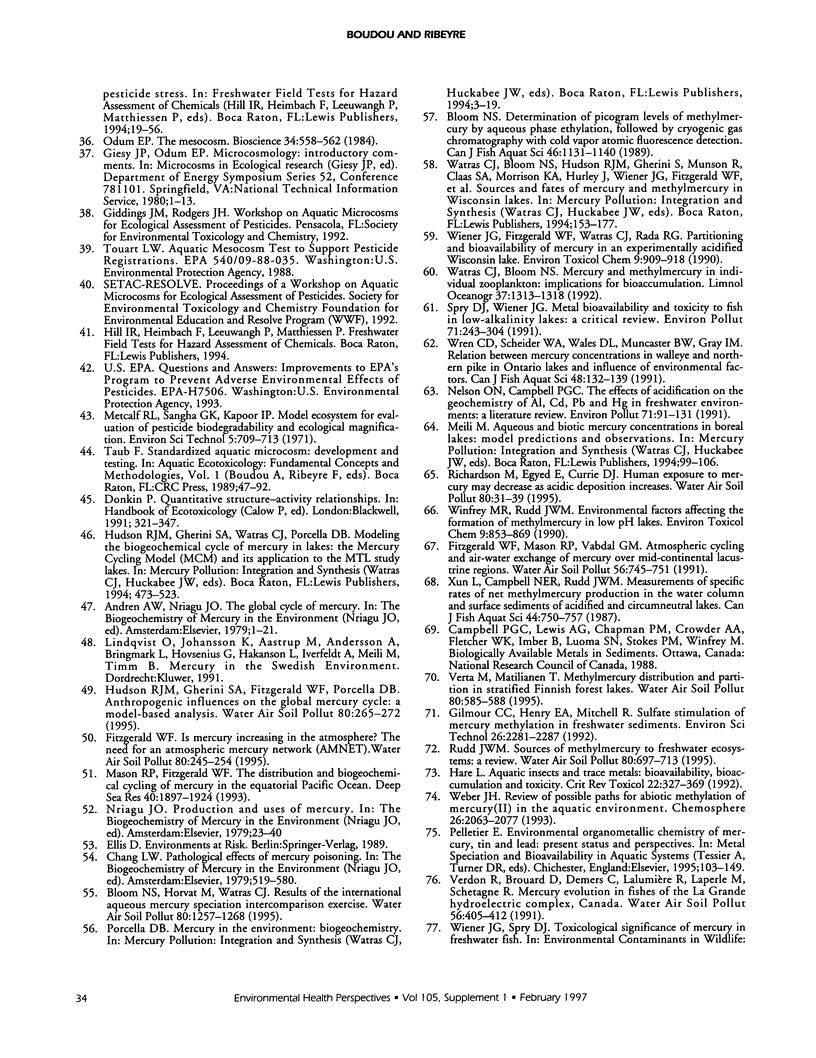
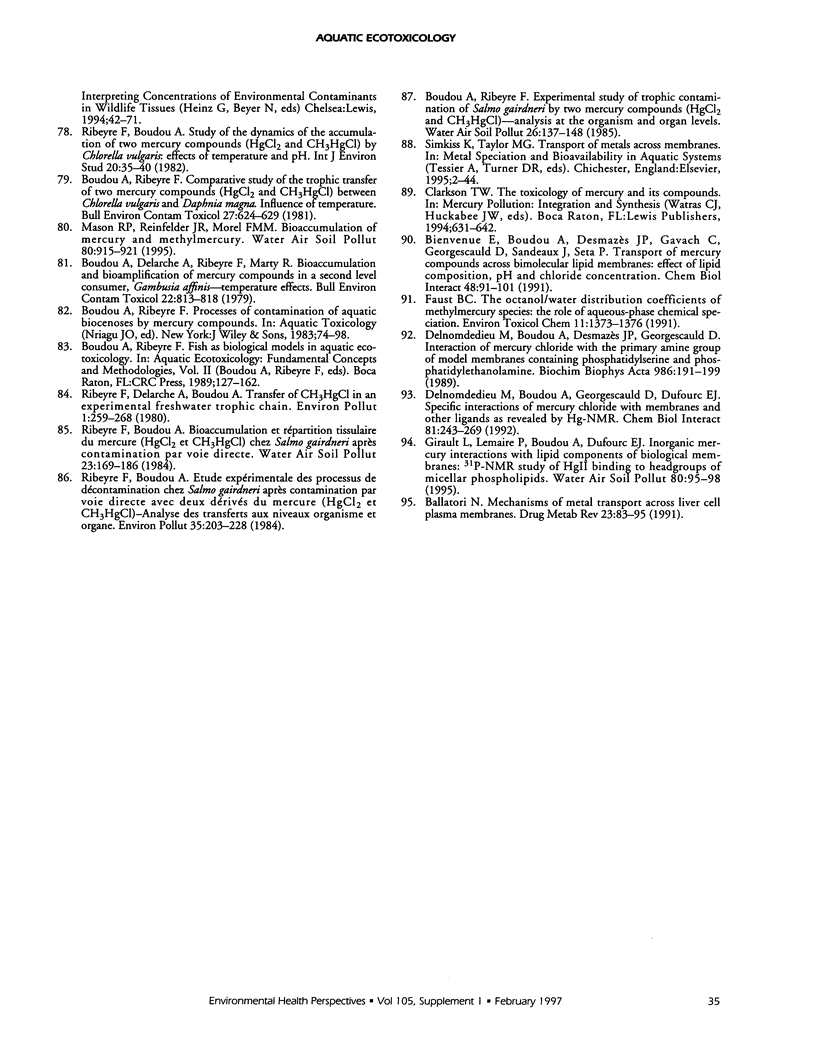
Selected References
These references are in PubMed. This may not be the complete list of references from this article.
- Ballatori N. Mechanisms of metal transport across liver cell plasma membranes. Drug Metab Rev. 1991;23(1-2):83–132. doi: 10.3109/03602539109029757. [DOI] [PubMed] [Google Scholar]
- Bienvenue E., Boudou A., Desmazes J. P., Gavach C., Georgescauld D., Sandeaux J., Seta P. Transport of mercury compounds across bimolecular lipid membranes: effect of lipid composition, pH and chloride concentration. Chem Biol Interact. 1984 Jan;48(1):91–101. doi: 10.1016/0009-2797(84)90009-7. [DOI] [PubMed] [Google Scholar]
- Boudou A., Delarche A., Ribeyre F., Marty R. Bioaccumulation and bioamplification of mercury compounds in a second level consumer, Gambusia affinis--temperature effects. Bull Environ Contam Toxicol. 1979 Aug;22(6):813–818. doi: 10.1007/BF02027030. [DOI] [PubMed] [Google Scholar]
- Boudou A., Ribeyre F. Comparative study of the trophic transfer of two mercury compounds-HgCl2 and CH3HgCl-between Chlorella vulgaris an Daphnia magna. Influence of temperature. Bull Environ Contam Toxicol. 1981 Nov;27(5):624–629. doi: 10.1007/BF01611073. [DOI] [PubMed] [Google Scholar]
- Boudou A., Ribeyre F. Mercury in the food web: accumulation and transfer mechanisms. Met Ions Biol Syst. 1997;34:289–319. [PubMed] [Google Scholar]
- Dakin T. A., Currie R. W. Prior treatment with heat shock attenuates the stress response in isolated working rat hearts. Biochem Cell Biol. 1995 Jan-Feb;73(1-2):31–39. doi: 10.1139/o95-004. [DOI] [PubMed] [Google Scholar]
- Delnomdedieu M., Boudou A., Georgescauld D., Dufourc E. J. Specific interactions of mercury chloride with membranes and other ligands as revealed by mercury-NMR. Chem Biol Interact. 1992 Feb;81(3):243–269. doi: 10.1016/0009-2797(92)90081-u. [DOI] [PubMed] [Google Scholar]
- Grouselle M., Boudou A., Oreja-Erroz B. Méthode de mesure des flux entrants de cadmium par titration du fura-2, à l'échelle d'une cellule MDCK. Etude par vidéo-microscopie de fluorescence. C R Acad Sci III. 1996 Apr;319(4):277–287. [PubMed] [Google Scholar]
- Hare L. Aquatic insects and trace metals: bioavailability, bioaccumulation, and toxicity. Crit Rev Toxicol. 1992;22(5-6):327–369. doi: 10.3109/10408449209146312. [DOI] [PubMed] [Google Scholar]
- Hinkle P. M., Osborne M. E. Cadmium toxicity in rat pheochromocytoma cells: studies on the mechanism of uptake. Toxicol Appl Pharmacol. 1994 Jan;124(1):91–98. doi: 10.1006/taap.1994.1012. [DOI] [PubMed] [Google Scholar]
- Nelson W. O., Campbell P. G. The effects of acidification on the geochemistry of Al, Cd, Pb and Hg in freshwater environments: a literature review. Environ Pollut. 1991;71(2-4):91–130. doi: 10.1016/0269-7491(91)90030-z. [DOI] [PubMed] [Google Scholar]
- Spry D. J., Wiener J. G. Metal bioavailability and toxicity to fish in low-alkalinity lakes: A critical review. Environ Pollut. 1991;71(2-4):243–304. doi: 10.1016/0269-7491(91)90034-t. [DOI] [PubMed] [Google Scholar]


